Longmont, CO Pollen and Allergy Report for Summer 2023
Pollen Allergy Trends in Longmont, CO
When is pollen lowest in Longmont, CO?

February
Lowest month total PPM
Avg. PPM
When is pollen highest in Longmont, CO?

March
Highest month total PPM
Avg. PPM
How does pollen in Longmont, CO compare to Colorado?
Longmont has a higher average PPM than the state of Colorado.
Longmont yearly avg PPM:
Colorado yearly avg PPM:
How does pollen in Longmont, CO compare to the USA?
Longmont has a higher average PPM than the USA.
Longmont yearly avg PPM:
USA yearly avg PPM:
Is pollen worse this year in Longmont, CO?
Spring 2023 was worse than spring 2022.
Spring 2023 PPM:
Spring 2022 PPM:
Average PPM in Longmont, CO
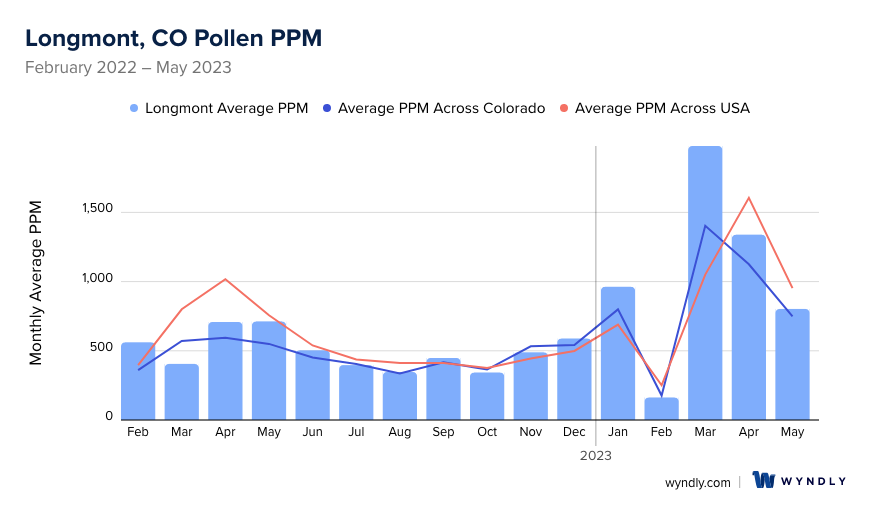
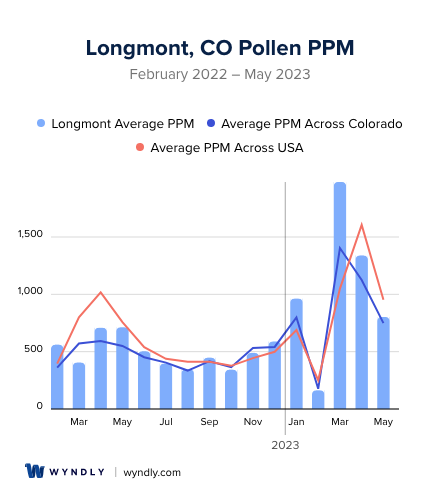
Longmont, CO Pollen and Allergy Breakdown by Month
Grass
When is grass pollen highest in Longmont, CO?
February has the highest grass pollen in Longmont, CO with an average PPM of
When is grass pollen lowest in Longmont, CO?
December has the lowest grass pollen in Longmont, CO with an average PPM of
Tree
When is tree pollen highest in Longmont, CO?
March has the highest tree pollen in Longmont, CO with an average PPM of
When is tree pollen lowest in Longmont, CO?
September has the lowest tree pollen in Longmont, CO with an average PPM of
Weed
When is weed pollen highest in Longmont, CO?
November has the highest weed pollen in Longmont, CO with an average PPM of
When is weed pollen lowest in Longmont, CO?
February has the lowest weed pollen in Longmont, CO with an average PPM of
Longmont, CO Pollen Monthly Breakdown by Pollen Type
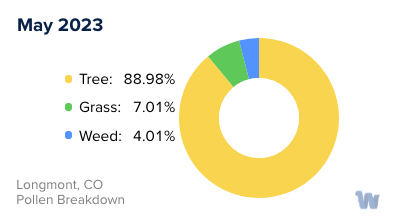
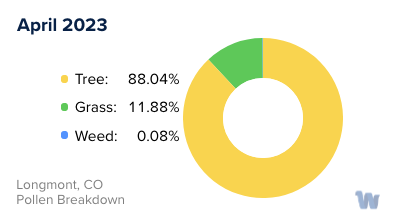
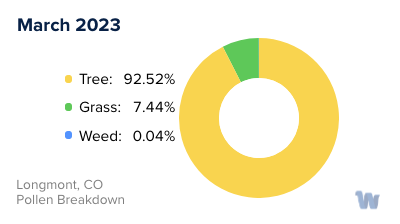
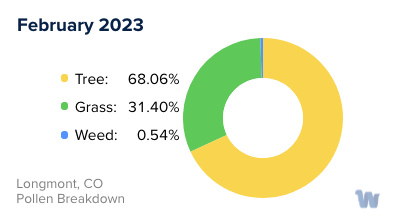
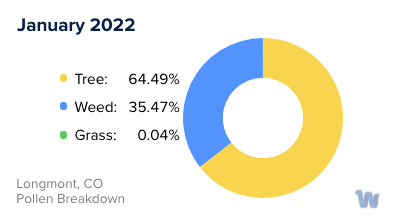
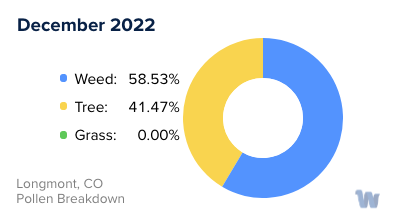
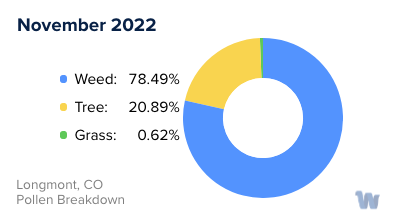
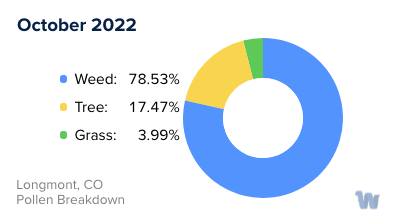
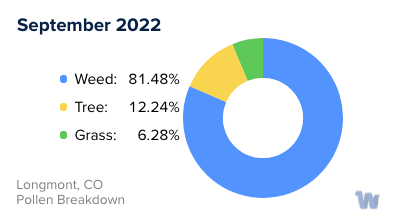
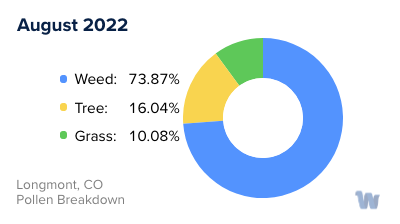
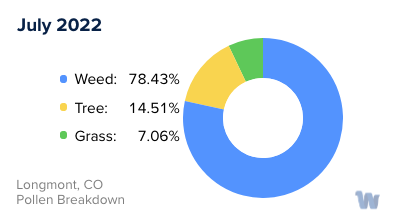
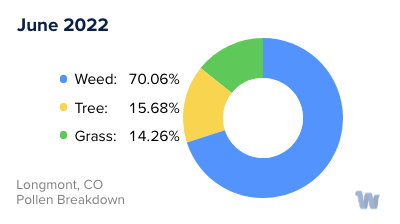
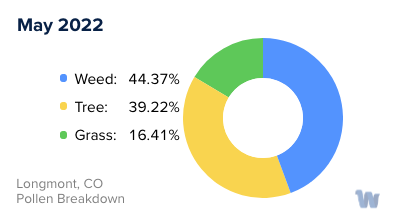
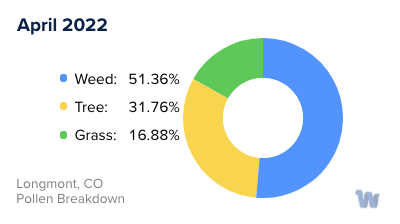
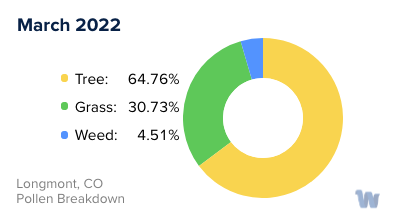
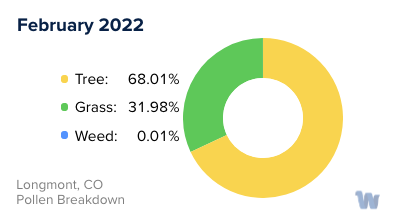
Pollen and Hay Fever in Longmont, CO
As the beautiful seasons change in Longmont, Colorado, many residents may notice an unwelcome guest: pollen allergies, also known as hay fever. Despite its name, hay fever doesn't involve hay and doesn't cause a fever. Instead, it's a reaction to various types of pollen present in the air that can cause sneezing, a runny nose, and itchy eyes.
Longmont, nestled in the foothills of the Rocky Mountains, enjoys a diverse plant life that enriches the environment but can also pose challenges for those with pollen allergies. The types of pollen most commonly associated with hay fever in this area are tree, grass, and weed pollen.
Tree pollen is usually the first to make an appearance as the winter snow melts away. From late winter to early spring, trees such as cottonwoods, aspens, and pines release their pollen, painting the air with an invisible mist that can trigger allergy symptoms.
As spring transitions into summer, grass pollen takes the stage. The lush open spaces and parks around Longmont are home to a variety of grasses like ryegrass, timothy, and Kentucky bluegrass. Their pollen grains, though microscopic, can pack a punch for those sensitive to them.
Finally, as summer fades into the cool embrace of fall, weed pollen comes into play. Ragweed, sagebrush, and lamb’s quarters are common culprits in the Longmont area. These plants release their pollen late in the season, keeping the allergy cycle going until the first frosts arrive.
Understanding the types of pollen and their respective seasons is a vital step towards managing pollen allergies. With each changing season, Longmont's residents can anticipate the types of pollen in the air, helping them better prepare for the challenges they might bring. While the beauty of Longmont's flora is undeniable, it's important to remember that it can sometimes lead to discomfort for those with hay fever. As always, consider consulting with a healthcare provider for personal advice on managing your pollen allergies.


